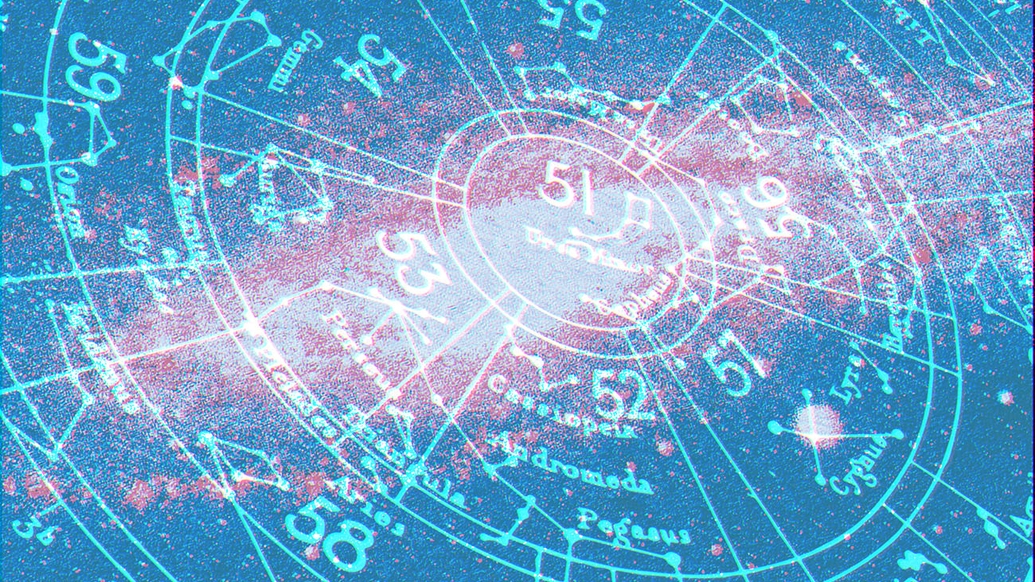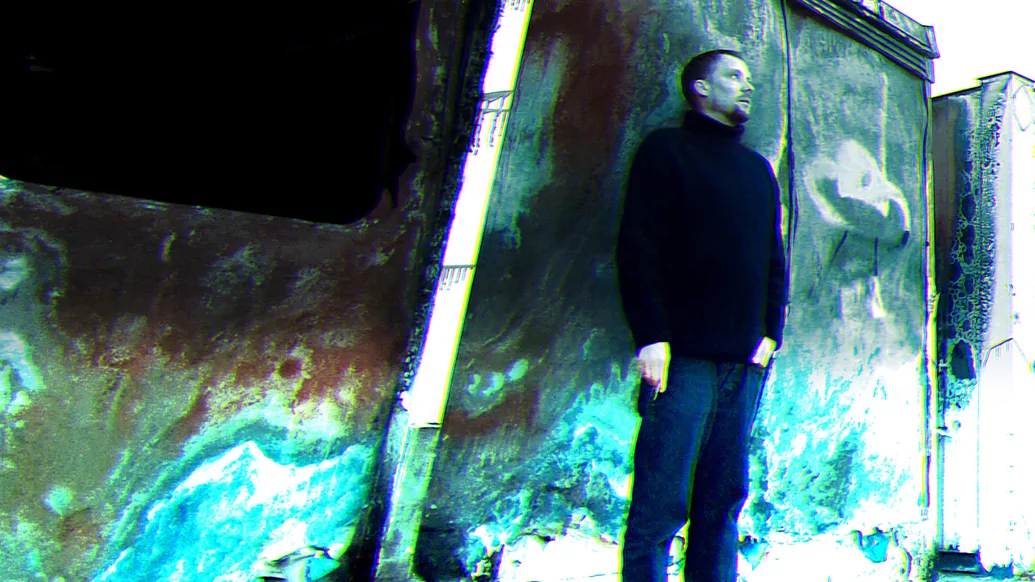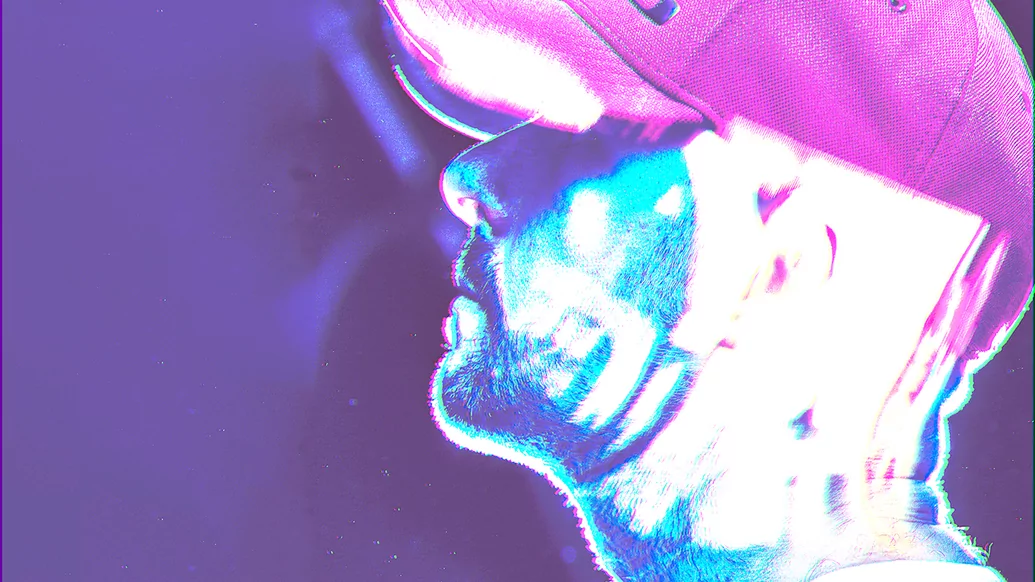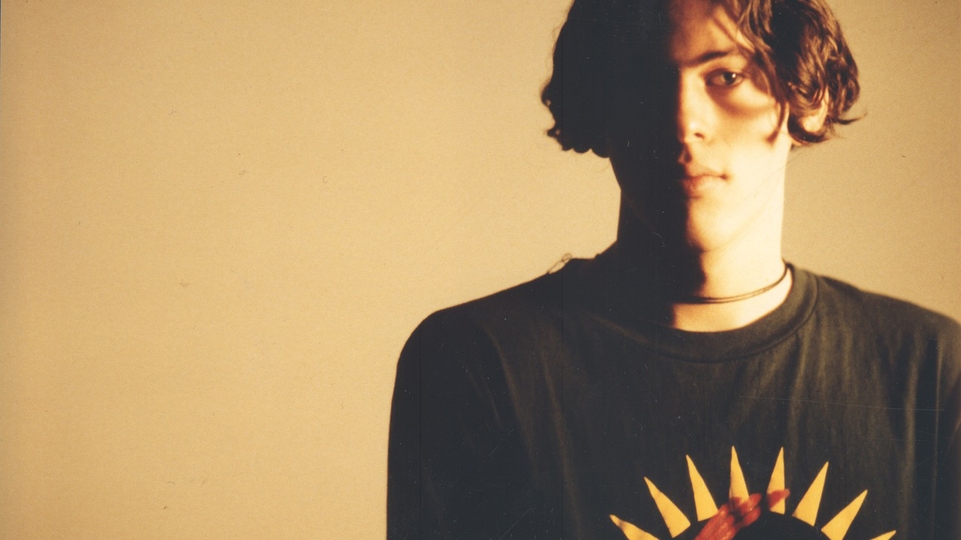
Dreams of the Future: Reimagining techno's sci-fi foundations
Science fiction has long been a muse for techno producers, but three acts – Lost Souls Saturn, Mat Playford and A Sagittariun – are taking their obsession with the future to new cosmic heights
"It wasn’t designed to be dance music, it was designed to be a futurist statement.” So said Jeff Mills on the subject of techno back in 2013. While The Wizard himself has remained utterly in the cosmos with his sonic explorations, the best part of the last decade has seen others in the scene take the sound in a very different direction: the predominant trend in techno has been towards an industrial concrete funk. Berghain became the centre of the universe. Its vast grey walls and cavernous innards were a place that people went to lose themselves in huge, pummelling drums and militant, marching percussion. Even in 18-hour marathons, melody barely featured, and the mood remained bleak and moody. It wasn’t a sound for dreamers, but a sound rooted in the increasingly grim reality of the here and now.
You could come up with all sorts of theories as to why that is: musical trends are usually a reaction to what went before, which in this case was alien and abstract minimal, with cold sound design and ever more reductive rhythms disappearing to barely a skeletal whisper. At a stretch, you might say that there has been little time for dreaming in the last decade; a global financial crisis brought everyone back down to earth. Elaborate melody and fancy strings were at odds with austerity and the rise of the far right. This summer, though, three new techno albums are casting themselves free from planet earth. They are heading off into the stars with fantastic results, but quite different motivations.
“I think we’re just entering a new time where audiences are more intelligent and a lot of post-ravers are looking for what’s next,” says Seth Troxler. His latest project is Lost Souls Of Saturn with Phil Moffa, a multidisciplinary coming-together of contemporary art, music and visuals that has given rise to a self-titled debut album out this month on R&S. It marks something of a transformation for Troxler, who has spent the last few years headlining every major festival in the world, playing increasingly accessible sets and somewhat goofing around. He became as talked- about for his Smokey Tails BBQ restaurant and outspoken opinions as his music, but with Lost Souls Of Saturn, all that changes.


“It’s about feeding my brain, and finding things that excite me on that level,” he explains of his new direction, before admitting that this new project with Moffa has “been the best four years of my life” and “put a drive back in me and my mind that had been absent”. It’s also seen him become an unlikely vegetarian and “make the best music of my life”.
The pair first met when Troxler went to Moffa’s Butcha Sound Studios in New York City for some recording sessions with The Martinez Brothers. Moffa — an acclaimed audio engineer himself — says, “We started making music within about 30 minutes of meeting, and never stopped”.
“From the start we always had a larger vision with our music,” continues Seth. “We noticed a neo-classical feel, like a techno opera. We feel that music had lost in some ways its cultural value and become a commercial entertainment commodity. We were looking at this music as art from the beginning, and developed concepts of presenting this differently than anything we had seen before.”
INTERNAL MOVIES
The project includes some spellbinding art by London design house Hingston Studios, who were briefed by Lost Souls to “get weird” and were employed because the key is that “this is more than a techno album”. There is also a mesmerising and epic video to lead single ‘The Awakening’ that finds the heroine in the metaphysical plane, meeting the Lost Souls Of Saturn and performing a ritual of acceptance of self.
“After facing the darkness of her past, she finds serenity.” All of this helps develop the concept beyond just the music. It adds layers of depth and thought that continues in the tradition of futurists like Sun Ra or Philip K Dick, who Moffa says is the most “important” science fiction writer.
There will also be a vinyl release for the album, a chance to catch the soundtrack in 4-D, and more tour dates for the installation. Its debut last year saw the pair play inside GaiaMotherTree, a 20-metre high sculpture created by Brazilian artist Ernesto Neto in Zurich’s main train station. Moffa describes it as, “The most special environment I have ever performed in”, and it saw people laying or sitting, meditating or zoned out while ambient music drifted all around them in transcendental fashion.
A first Lost Souls Of Saturn EP came on R&S last September, and now the full album arrives with a dark and deeply involving sense of unspoken narrative. It weaves psychedelic bassoon-like sounds with swirling pads, desolate astral tundras with hallucinatory sonic visions, and spoken sci-fi motifs with celestial melody.
“Techno music was about futurism; it was about ideas. When these synths and drum machines came out, they represented a new future”
Free jazz, musique concrete and otherworldly apparitions all feature. Troxler explains that questions like, “Why has music lost value? Why are our peers not challenging what an album and music can be? What has yet to be done?” informed discussions in the studio over the course of the last three years, as did talk of Saturn and fringe conspiracy theories, “lots of recreational Twilight Zoning” and movies like Adam Curtis’ Hypernormalisation. All of this fed into an internal movie in the mind of the producers, which then they set about sound-tracking.
“The album is a creation story from the Divine Plane, transmitted to us through our dreams to help humanity break the illusion of the six forms of suffering,” explain the pair. Those forms are bigotry, deception, greed, narcissism, objectification and pollution, and it’s fair to say this sort of deep thinking doesn’t often inform electronic music. But Seth believes it is actually the root of techno, much like Mills.
“I think being from Detroit, there is a deep solitude and starkness to the city, like a relic,” he says. “Techno music was about futurism; it was about ideas. When these synths and drum machines came out, they represented a new future.”
UTOPIAN IDEAS
After the Berghain sound, techno has tended towards ideas of dystopia. Industrial is on the rise. Faster tempos, harsher textures and more ragged rhythms have come to the fore, with breakout stars like Helena Hauff at the helm. Troxler, though, “would like to see utopian stories again. I want to read stories beyond my imagination and make art that sparks the imagination of others.”
Moffa is more practical in why he thinks techno often tends towards the future. “If you go back to the songs of nature,” Moffa says, “then primitive man, and then acoustic instrumental music, electronics are guaranteed to sound futuristic, so it’s no wonder that science fiction and techno have the potential to inform each other. How could space not fascinate the curious, forward-thinking mind? It is in our nature to be explorers. As Carl Sagan said, ‘The surface of the earth is the shore of the cosmic ocean... the water seems inviting’.”
Long-standing UK artist Mat Playford certainly agrees. He is someone whose whole discography is defined by a love of sci-fi electronics and celestial synth-work. Despite “pretending to faint” to get out of a school concert back during his days of taking piano lessons, he went on to grow fascinated by the early ’80s synth pioneers, such as Jean-Michel Jarre. When an older brother started going to the original raves back in the late ’80s and early ’90s, Playford followed suit. As well as the music itself, the imagery around those events was often of mind-expanding experiences, space travel and astral exploration, so it resonated with him.
When a friend gave him a keyboard aged about 13, he played it every day, learning Marshall Jefferson tunes by rote. He went on to do the country’s first ever music diploma at Leeds College, and has been producing ever since.
“Sci-fi is ingrained in me, all producers and culture itself,” he says down the phone while out watering his vast collection of chilli plants at home on the South Coast. “From the space race to alien programmes, Doctor Who, Delia Derbyshire, Star Trek and Star Wars, futurism has always been linked to music tech. Look at Ray Kurzweil, who invented a top-shelf synth and is the futurist that came up with the singularity. Even the machines we use look futurist, all the electronics flashing like spaceships.” Playford’s latest album, ‘Solar’, is “100% a concept album” that came to him after finding an old book in a nautical shop. Almagest, by second-century Greek polymath Claudius Ptolemy, is a “mathematical and astronomical treatise on the apparent motions of the stars and planetary paths”. It was a starting point for an album that journeys to the edges of our galaxy and flies by floating planets, cosmic bodies and black holes, giving you a sense of intergalactic voyage. It paints a classicist cosmic picture full of hope and glory, twinkling keys and infinite horizons, rather than the more unsure and trippy aesthetics of Lost Souls Of Saturn.


THERAPY
To deepen the cosmic connections, the whole of Playford’s album was written in a studio powered by 36 solar panels, something Mat invested in years ago. He doesn’t have a battery system, so uses the electricity as it comes to him from the sun, meaning the album was written mostly during the day (and standing up, as he intends to perform it live). Any excess energy is then sold back to the national grid.
Economic and environmental factors were both motivations for his solar set-up, but also that it “feels rebellious”, says Playford. “Acid house was all about counter-culture and rebellion, and I think this off-grid set-up feeds into that.” The reason for making music, meanwhile, “is the joy that it gives me. I haven’t been popular on Beatport or with popular magazines, but it is meditation and therapy.
“That moment when you’re playing around on a synth and computer and it turns into a piece of music — that actual moment is pure joy, you’re not thinking about anything else or upset about anything. That is living, and that’s why I’m so obsessed with it, and will always keep doing it no matter what.”
The album itself was also borne from the desire to, “do something grander than dancefloor tracks, with a bit more composition. There is a place now for electronic music in so many different venues and settings, not just the dancefloor, so you can experiment much more”.
To that end, he got in a master studio engineer, Steve ‘Burty’ Burton. The pair have been friends since 2003, when they met at the fabled Roundhouse Studios. Years later and by pure chance, Playford moved into the same village as Burton, so they finally got together for this project. “He’s amazing at arranging strings, so as soon as we made the first album track ‘Last Perihelion’, the whole thing flowed from that.”
Playford would get the vibe together, and then Burton would put the big strings in, direct the arrangement and coach on piano. “I didn’t have to remind myself of the concept of the album, it just happens in the moment,” Playford says, “and though you want to create a certain energy when you make music, I don’t think I’ve ever been able to completely direct myself 100% in what I’m doing, there’s always a time where you just go with it.”
Playford is a self-confessed dreamer who reckons we have “mugged it” here on planet earth. The album tracks are all words relating to the concept of the album, and add another layer to the music’s message, which is one of positivity and beauty.
“I’ve always had a soul vibe,” he says. “Dreamy chords are where my hands naturally fall. I like melody and you don’t see too much melody in that Berghain stuff, which is more about drums.”


“Techno has always spoken to me without ever having to say anything”
FOR THE DREAMERS
Bristol dream-weaver A Sagittariun loves the Berghain sounds as much as “cosmic noise and hard-as-nails techno”, but his own work is decidedly intergalactic, not least on latest album ‘Return To Telepathic Heights’ on the Running Back Incantations label. He says it is the first time he’s written music with such a strong concept from so early on in the process, “which in part made it more challenging”, but on the flipside, it helped him focus on “what I didn’t want to produce”.
So why dreamy, and not dirty? Zoned out, and not locked in?
“The music has to come from my own personality and my own thought forms,” he explains. “The reason why you won’t see A Sagittariun music in all the charts or on the big radio shows is that I am not out to make carbon copies of everything else that’s hot right now. I am not doing this to follow trends or position myself somewhere among the majority sound. In fact, I make a subconscious move to go the other way.”
He says that these days, he is more interested in making a space western soundtrack, putting his style of techno into the 100bpm realm and leaning on “the cinematic influences of Sergio Leone, Stanley Kubrick and Steven Spielberg, and the musical influences of Ennio Morricone, Adrian Sherwood and Derrick May. That’s just pretty out- there I think, and exactly the kind of project I wanted to indulge myself in.”
Dance music continues to permeate everyday life, from adverts to the charts, supermarkets to art installations, and that newfound freedom is what A Sagittariun — and all these space techno artists — are capitalising on.
“The albums I have produced are always for a personal listening experience,” A Sagittariun says. “It’s not club music at all really, the dancefloor nowadays is almost always a predatory area filled with people who don’t give a shit about the music and are only there to look good or take photos to impress their mates. This album is for the loners, the dreamers, the night trippers, the deviants, the others, the fantasists, those with open minds and open hearts.
For someone lying horizontal with a pair of headphones, lights down low, incense burning, perhaps a relaxing smoke. Those in transit too, late-night car journeys, trains, underground, in flight. I always like to listen to albums while in motion.”
And this one certainly takes you somewhere across its 10 tracks. Like all previous A Sagittariun music, it is broad in scope. There are high-speed cosmic trips, like the slippery and Millsian ‘Watch The Skies’, next to less linear cuts like the downbeat ‘Zeus I, Prepare For Launch’ with its melancholic chords and heavy, loose drums. Plenty of alien life-forms characterise the deep and cavernous ‘Version Excursion’, while throwback chill-out cuts like ‘Dream Stealers’ bring to mind a ’90s Castlemorton comedown.
IN CHARACTER
While the album was written as a way of embracing pure fantasy and imaginary worlds, the aim was also to convey feelings of hope.
“Techno has always spoken to me without ever having to say anything,” explains A Sagittariun. “Those early Rhythim Is Rhythim tracks are so filled with meaning and hope, curiosity and optimism: plenty of techno has inspired me in this way.”
In order to get into a suitable mind-set to make this adventurous music and conjure previously unimaginable worlds, A Sagittariun had a vision of Clint Eastwood in cowboy film A Fistful Of Dollars. “I started going into character, like a method actor would,” he says. “I did literally wear a 10-gallon hat during the production process.”
He fully immersed himself in the cinematic aspect of the concept, consuming Western movies and sci-fi films like Close Encounters Of The Third Kind while reading the works of authors such as Ray Bradbury. Of course, this comes years after he experienced the first wave of UK rave and techno, which was often about escapism and deep space voyages, from Luke Slater to Orbital, Global Communication to Aphex Twin’s ‘Selected Ambient Works’.
“I’d say that I was playing out a certain attitude and frame of mind when producing the album. By the very nature of all A Sagittariun music, that sci-fi element is always there from the off, so if I’m not making swimming motions with my arms, as if I’m swimming through water, space or sound, then I’m not on track. As bizarre as it may sound, this is the process that keeps me producing as A Sagittariun.”
A recurrent theme in sci-fi techno is that it is written as a soundtrack to a movie; either an imaginary one, or one that flows out of the artist after they have submerged themselves in the work of fellow futurists.
“In a weird way, it was as if we weren’t in control,” says Troxler of the writing process. “We became vessels in a very literal sense. Music flowed out of us and it gives us the possibility to dream of our future, because reality is a construct. We’re making it up constantly, and it’s different for everyone.”
So long as we have techno dreamers, our reality can be whatever we want it to be.





